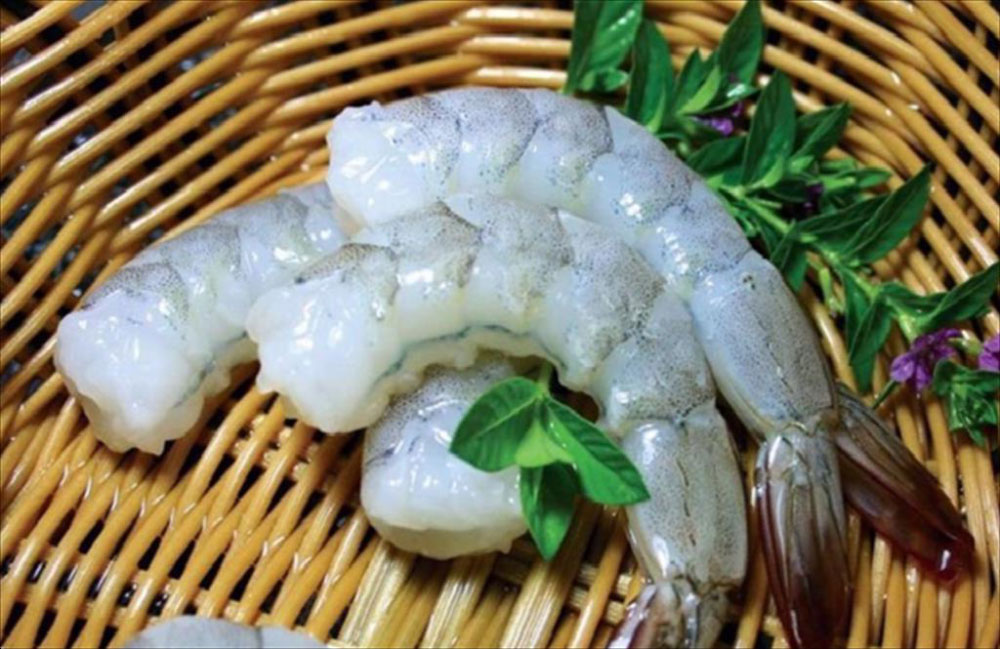Vietnam Seafood
Vietnamese shrimp ranks 3rd in the EU – facing strong competition from Ecuador and India
Product structure: Whiteleg shrimp accounted for 80% of Vietnam’s shrimp export value to the EU, while value-added products made up more than 50% of total shrimp export turnover to this market.
EU shrimp imports rebound but start to slow down
The EU remains one of the world’s largest shrimp importers. During the first eight months of 2025, the bloc imported 289,142 tons of shrimp worth EUR 1.8 billion, up 19% in volume and 24% in value compared to the same period in 2024. However, growth slowed in August, with import volume up only 6% and value up 8%, reflecting price stabilization and more cautious purchasing behavior from EU buyers after a strong buying phase in early 2025.
In terms of product mix, raw frozen shrimp continued to dominate, accounting for 252,789 tons, while value-added shrimp reached 36,353 tons—both categories growing 19% year-on-year. Although the value-added segment remains smaller, it is increasingly prioritized by EU importers, creating opportunities for suppliers with advanced processing capabilities — a niche where Vietnam holds a clear advantage among Asian competitors.
Vietnam ranks 3rd in the EU – competing with two shrimp giants
According to EU import statistics, Vietnam exported 35,004 tons of shrimp to the EU in the first eight months of 2025, up 14%, ranking third among top suppliers. Ecuador led with 160,139 tons, followed by India with 36,880 tons.
Ecuador maintained its leading position with a 36% surge, supported by large-scale farming, low production costs, and an active shift toward processed products. India followed with a 27% increase, expanding both raw and basic processed shipments. Vietnam’s growth was steadier but slower, focusing mainly on high-value processed products, which make up over 50% of its shrimp export value to the EU — a major advantage compared to its two rivals.
However, the rapid expansion of Ecuador and India has pushed down average import prices in some months, putting pressure on Vietnamese exporters’ profit margins. If this trend continues, Vietnam will need to consolidate its position in high-value segments rather than competing purely on price.
Leveraging EVFTA and processing strength
Vietnam is among the few Asian nations with a Free Trade Agreement (EVFTA) with the EU, which grants 0% tariffs for many shrimp product lines. In addition, Vietnam possesses EU-standard processing facilities, with numerous plants approved to export to the bloc. These advantages help Vietnamese shrimp penetrate deeper into European supermarket supply chains and retail networks.
As EU consumers increasingly value sustainability, traceability, and low-carbon production, Vietnam’s efforts to adopt high-tech farming and obtain certifications such as ASC, BAP, and GlobalGAP are significant “green advantages” for maintaining market share and strengthening its reputation as a responsible supplier.

Emerging challenges
Despite opportunities, the EU market poses rising challenges. New regulations such as the EU CSDDD (Corporate Sustainability Due Diligence Directive) and Germany’s Supply Chain Due Diligence Act (SCDDA) require importers to ensure products do not harm the environment, involve labor violations, or use untraceable raw materials — potentially affecting Vietnam’s seafood sector.
The EU’s ongoing “yellow card” warning on Vietnam’s wild-caught seafood, while not directly related to farmed shrimp, still creates psychological caution among importers, demanding greater transparency from the entire industry.
Furthermore, if the EU signs new FTAs with competitors like Indonesia, Malaysia, or Thailand, Vietnam’s tariff advantage under the EVFTA could narrow considerably.
The way forward for Vietnamese exporters
The increasingly competitive landscape also presents new directions for Vietnamese shrimp exporters.
First, the premium processed shrimp segment — especially ready-to-cook and ready-to-eat products for retail and foodservice channels — still holds significant potential. These products enjoy better profit margins and are less affected by fluctuations in raw shrimp prices.
Second, exporters should invest in electronic traceability systems and collaborate with EU buyers to meet environmental and social standards from the farming stage. Early adopters will gain trust from major supermarket chains and secure long-term contracts.
Lastly, businesses need to strengthen direct partnerships with distributors and retailers instead of relying solely on intermediaries. The Private Label model — producing for supermarket brands — is a promising strategy for Vietnamese shrimp companies.
Looking ahead to Q4/2025 and 2026, Vietnam’s shrimp exports to the EU are expected to remain positive, supported by year-end demand recovery. However, growth may slow due to abundant global supply and declining export prices.
With strong processing capacity, export experience, and EVFTA tariff benefits, Vietnam is well-positioned to capture further opportunities in the EU market — provided that businesses adapt proactively to new regulatory standards and continue building a reliable, high-value national shrimp brand.
Source: https://seafood.vasep.com.vn/



 Tiếng Việt
Tiếng Việt